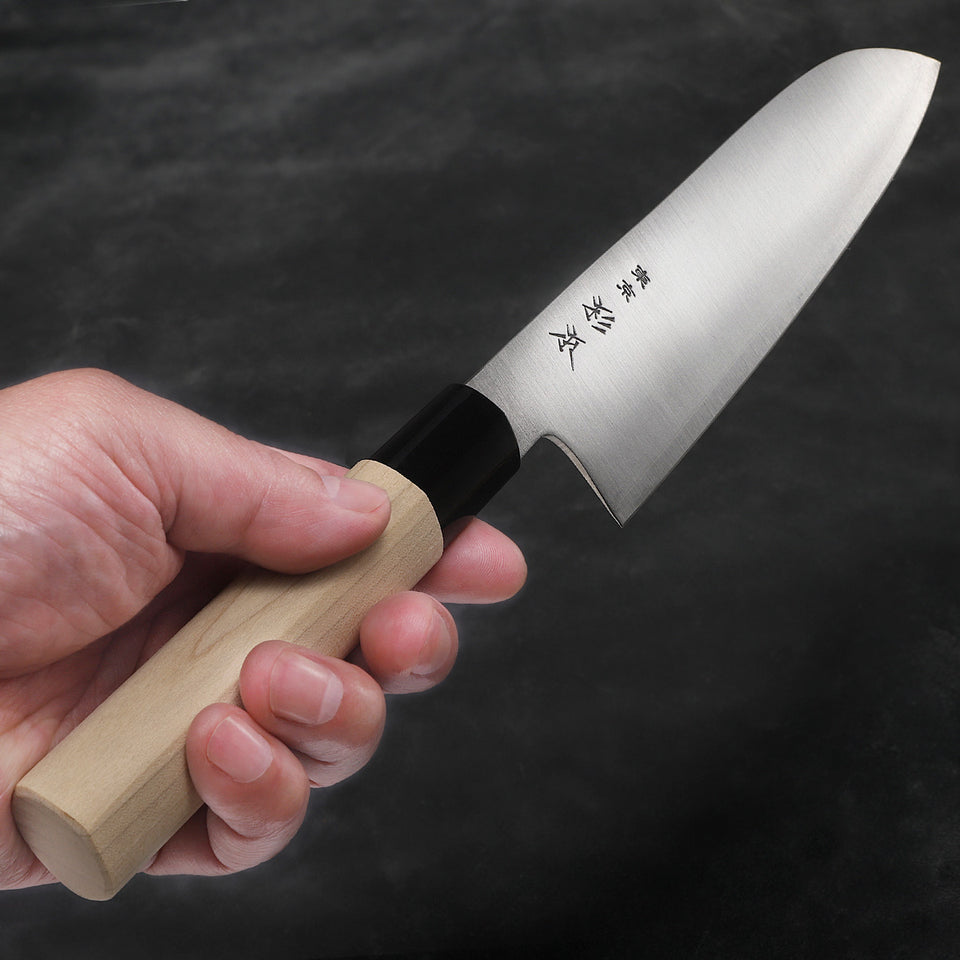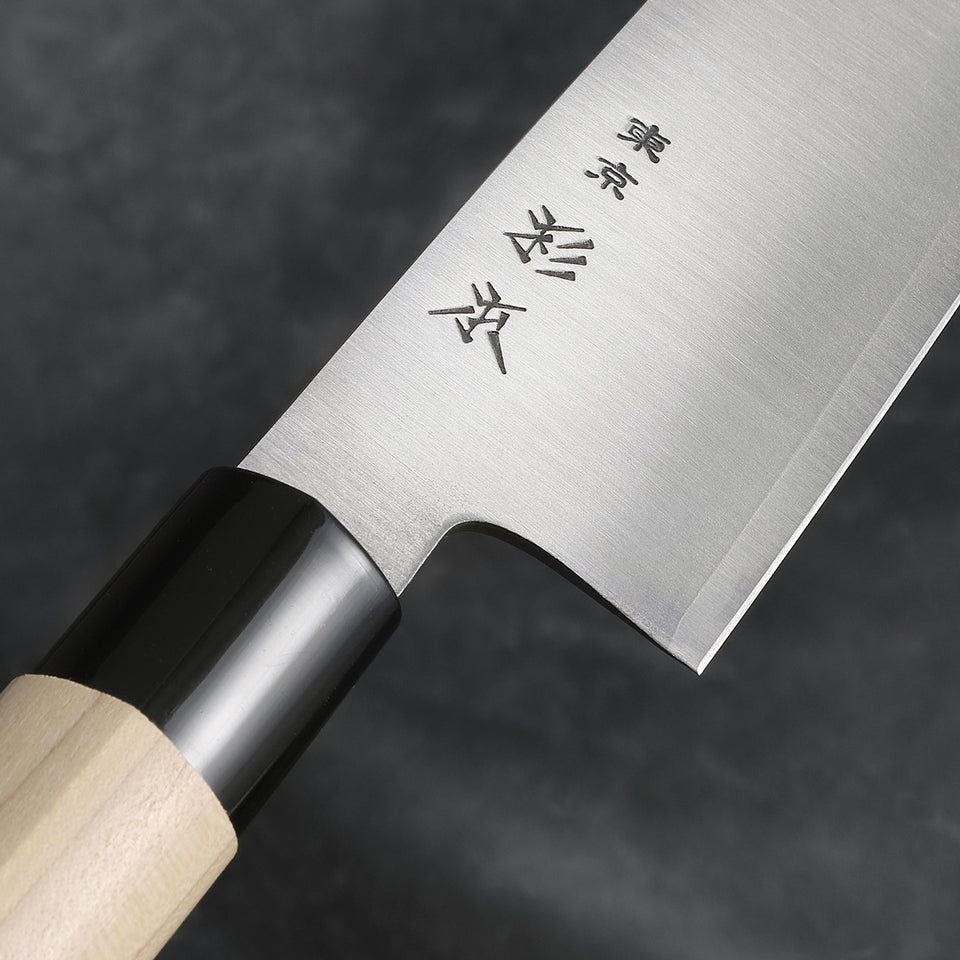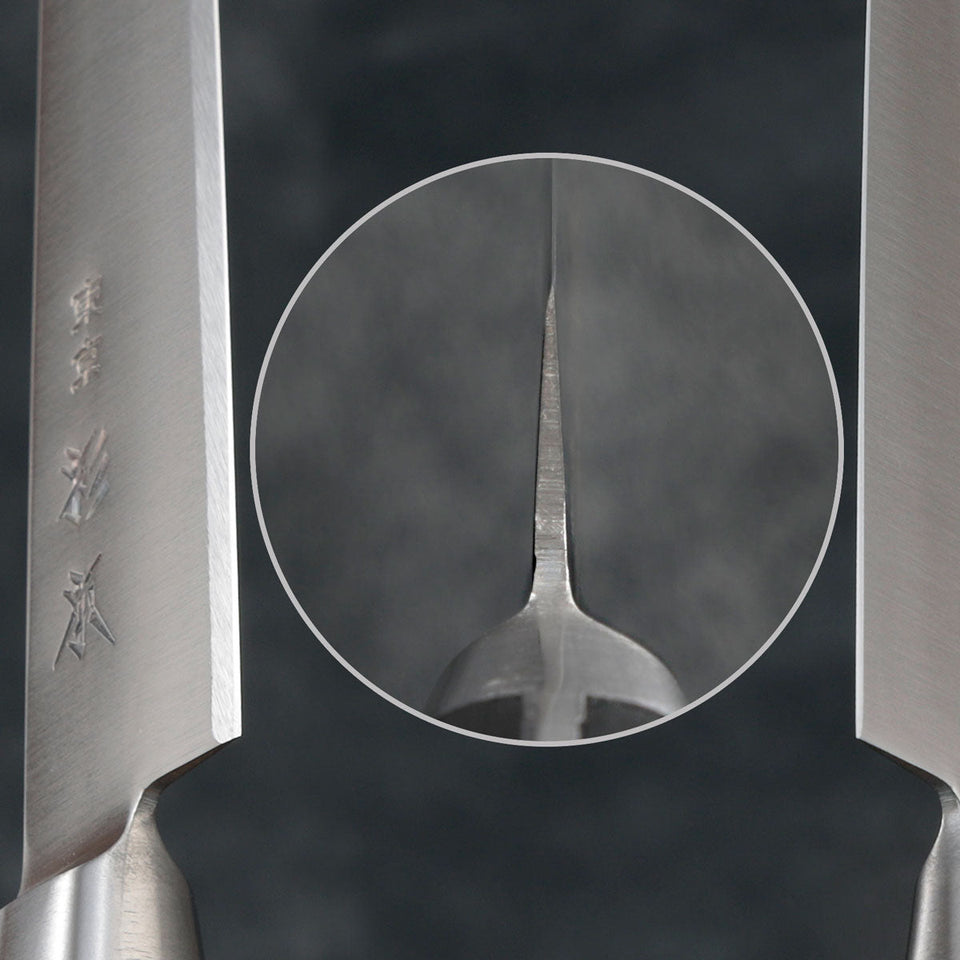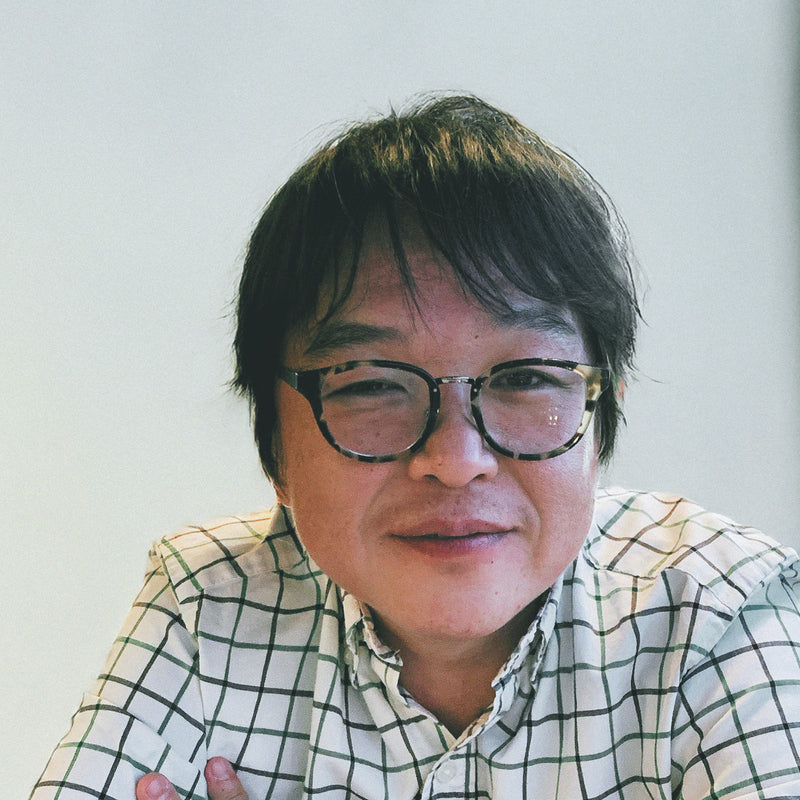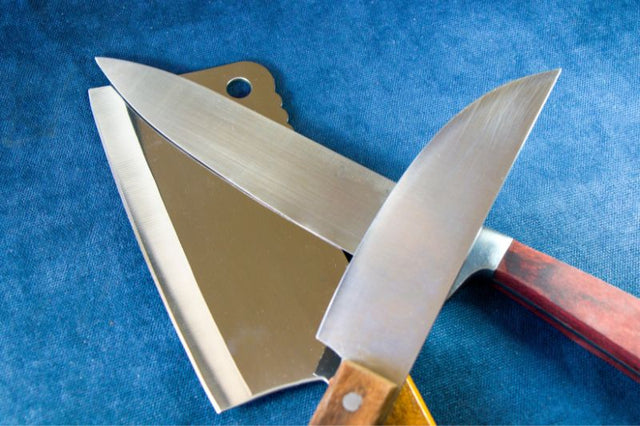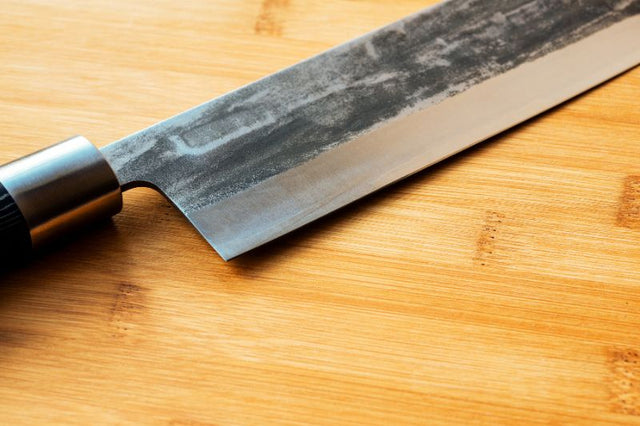Whether you're a hardened veteran or a wide-eyed beginner, the sheer variety of available Japanese knives can be confronting. Luckily for you, the Gyuto (牛刀) exists. It is a go-to knife that anyone can use. It crosses categories, and you can rely on it when any job in the kitchen needs doing.
Two Worlds Combine: The Structure of This Article
Beyond informing you about the practicality of the Gyuto, I'll be discussing the history of Western influence on Japanese culture and cuisine. It's a deep cultural relationship, and the Gyuto symbolizes this connection. Moreover, its creation marks a fascinating time when Japan began opening up to the world after a long silence.

The History of the Gyuto
To Tell the Story of the Gyuto, We Need to Go Back to an Isolationist Part of Japan’s History Known as Sakoku
Within the Edo period, Sakoku(鎖国) was a span of over 200 years from roughly 1603 - 1868 CE in which Japan isolated itself from much of the world. During this time, there was minimal accessibility to Japan for foreigners; generally speaking, ordinary Japanese people were not permitted to leave the country either.
The Government at the Time Was Anxious About Western Religions and Culture
It was an extreme measure, but there was concern about the spread of Western influence, particularly Christianity. On top of this, having open trade with the world had previously caused a boom in piracy around Japan. Sakoku (鎖国), in many ways, was an attempt to protect Japanese culture, lifestyle, and religion. However, it was also in place to protect the established powers and hierarchy.
But in the Meiji Period, the West Forced Japan to Stop Sakoku
Coming into the Meiji(明治時代) period, Japan began to open up to trade with the West. At first, this was not willingly. In 1853, U.S. Commodore Matthew Perry sailed to Japan with several warships and an ultimatum: Japan had to open up trade with the West or risk war. That was the rocky beginning of Japan's renewed diplomatic relations with the world.
The Hollywood movie, the Last Samurai featuring Tom Cruise, depicts very well of this time period.
Then, They Began to Embrace Some Western Ideas and Ways of Living
Japan began to import Western technology and cuisine. For hundreds of years, the Japanese had been eating seafood almost entirely. But, seeing how the Westerners were generally larger and stronger than many Japanese, they believed this to be due to a diet of meat, especially beef. So, wanting to grow their military and economic power, the Japanese government began encouraging this new diet and trade.
This Rapid Change in Lifestyle Lead to the Creation of the Gyuto
Sometime during the Meiji period, the Gyuto was born. As the Japanese were impressed with French cuisine, it was designed to mimic the French-style chef's knife. When translated literally, its name means "cow sword," but it is probably more accurate to say "beef knife." Likely this is because of the perceived beef-heavy diet of the West. Funnily enough, Japan is now renowned for having the best beef cattle in the world, called wagyu. (和牛)

The Gyuto Then Began to Replace Traditional Knives in Homes Across Japan
The popularity of the Gyuto grew with the industrial boom and urbanization of Japan. Before its creation, households generally used a trinity of knives for specific purposes: the Deba for whole fish, the Yanagi for small slices of fish, and the Nakiri for vegetables. But these knives lessened in use as Western-inspired multi-purpose knives like the Gyuto, Bunka and Santoku began to catch on.
You can read more about specialist knives and the Deba here.
Today, the Gyuto Is One of the Most Popular Styles of Japanese Knives
It functions like a Western chef's knife but with all the benefits of hard, super-sharp Japanese steel. As Japanese knife makers continue to pursue outstanding craftsmanship, the Gyuto has earned a place in the hearts of many Western and Japanese chefs.

Features
A lightweight, multi-purpose chef’s knife
A Gyuto's blade typically ranges from 180mm to 300mm (7.1 inches - 11.8 inches) in length, but it can be shorter down to 150mm and longer up to 360mm. (We carry 180mm, 210mm, and 240mm Gyuto knives here. We generally recommend the 180mm to 210mm to home cooks, while amateur and professional chefs usually opt for the 240mm.)
Shorter blades are nimbler, and longer blades have more slicing power, so a medium-length blade would be most practical for general kitchen use. At the end of the day, however, the choice will be dictated by the user’s size and the size of the knife they feel comfortable handling.
More French than German
It is styled closely to the form of the slimmer French-style chef's knife rather than the heavier German design. It has been described as a flatter version of the French chef’s knife. The Gyuto is long with an edge that subtly curves up.
The spine of the blade slopes down slightly, forming a sharp tip. The combination of a thinner, lighter blade and a balance point further along toward the tip makes the Gyuto a more agile and precise knife.
Western Style With the Amazing Benefits of Japanese Steel
Compared to a Western chef's knife, it may appear that little is different, but the advantages are in the details.
The most significant difference is Japanese steel.
Japanese Blacksmithing Techniques and Japanese Steel
Japanese knives are typically categorized into honyaki or kasumi. These classifications are based on the method and materials used in forging the knives.
Honyaki (true-forged) indicates traditional manual forging and a single material, hagane (high-carbon steel/Japanese steel), creating a mono steel blade. The production method is similar to that of traditional Japanese swords (katanas). Honyaki knives are crafted by skilled blacksmiths and priced higher.
Kasumi (mist, referring to the hazy appearance of the soft iron material used) means the blade is laminated. There’s hagane at the core and cutting edge, and jigane (soft iron) cladding the body and spine. Kasumi knives are understandably cheaper.
A Harder Steel, a Sharper Cutting Edge
The Honyaki Gyuto is expectedly made with hagane or Japanese steel, which sometimes even exceeds 60 HRC on the Rockwell Scale. This is harder, allowing acute blade geometry.
Most Western chef’s knives are honed to an edge angle of about 20 to 22 degrees. Meanwhile, the Gyuto can sustain an edge angle of about 15 to 18 degrees or even sharper. As a result, even a lower-end Gyuto will have better edge retention and sharpness than most Western knives.
A Slim and Light Design for Speed and Ease of Use
A Gyuto knife is hammered thin.
That means it's light and can cut fine slices. As a result, it helps to prevent you from getting a sore wrist or hand when doing a lot of chopping in the kitchen.
You will also find that this lightness allows you to cut significantly faster than with a heavier knife.
You will also hold a Gyuto knife a little differently from a chef’s knife because of the blade’s make. You’ll be inclined to grip the Gyuto near the blade’s base for better control when cutting.

A Variety of Handle Choices
The Gyuto typically has a handle made of wood, resin, or composite material like Pakkawood (impregnated wood veneers) or G10 (fiberglass and epoxy resin) handle. It may come with a yo-handle (“yo” means western-style) or a wa-handle (“wa” means Japanese-style). A Gyuto with a Japanese-style handle is referred to as a Wa-Gyuto.
Wa-handles come in different shapes: D, oval, octagonal, shield, etc. Many have observed the D-shaped and octagonal handles to allow the most ergonomic grip. Still, it really comes down to the user’s personal preference.
Common Gyuto Knife Variants
There are other kinds of Gyuto besides the regular one most people are familiar with. As previously mentioned, there’s the Wa-Gyuto with the wa- or Japanese-style handle. The other common variety is the Kiritsuke-Gyuto or K-tip Gyuto.
The Difference in a Japanese-style Handle
The Wa-Gyuto is distinct from a typical Gyuto because of its handle. The western-style or yo-handle is generally made full-tang. This means that the blade steel extends to the handle, making it heavier. The Wa-Gyuto, on the other hand, doesn’t have the blade steel adding to the weight of the handle, so the blade is usually hammered thinner to maintain balance with the lightness of the handle.
The lighter Wa-Gyuto has a balance point further towards the blade tip, allowing the knife to accomplish the cutting work for the user. The forward balance enables easier wielding and steering for making precision cuts.
The Difference in a Kiritsuke-Style Tip
The Kiritsuke Gyuto or K-tip Gyuto has the angled reverse-Tanto tip of the Kiritsuke knife. The Tanto is a short Japanese sword with a blade that sharply angles up to the spine. The Kiritsuke knife’s blade angles down to the cutting edge instead. While such a blade isn’t ideal for rock-chopping, it’s excellent for push-cutting and tap-chopping.
How to Use a Gyuto Knife
There’s No Real Secret Trick to Using a Gyuto, Which Is Part of Its Brilliance
You'll already know what to do if you've used a chef's knife. The Gyuto is designed for push-cuts, rocking, and chopping.
Its pointed tip is excellent for precision cutting as well as working with very little elbow room. Its blade has a mostly flat heel section that allows good rock-chopping. It is also tall enough for tap-chopping. It is even long and thin enough to do draw-cuts. Almost any part of the blade can be used for either push-cut or pull-cut. In fact, with its slight curve, just about any knife work is possible.
Its Multi-Purpose Design Covers Nearly All Tasks
Unlike traditional Japanese knives, the Gyuto is specifically made to be a generalist. So, it is not only acceptable but expected that you'll use it for meat, fish, and vegetables. While it may not perform as well as a knife specializing in one of these categories, its versatility is unmatched.
It can perform a variety of common slicing techniques.
- Chopping/Thrust-Cutting: Place the meat or vegetable near the heel of the Gyuto and cleanly cut through it, no matter how tough it is.
- Rock-chopping: With a see-saw motion, you can dice, finely or roughly, a selection of meat or vegetables into chunks or mince them even smaller.
- Push/Pull-Cutting: Use the slope to slice through meat with a gliding motion from the heel to the tip, push-cutting muscular cuts of meat and pull-cutting softer ones.
But, Don't Use a Gyuto for Everything, and Take Good Care of It
However, you will still want a Petty knife for peeling and fine cutting. Also, don't attempt to use your Gyuto for any heavy filleting, animal joints, or soft bones; that's best left to the Deba.
Additionally, because a Gyuto will be thin, you must be careful. It's best to avoid using it to crush garlic, and never use any Japanese knife to cut frozen foods or hard objects. You risk chipping the blade!
Choosing the Right Gyuto Knife for You
There are several criteria that can guide you in picking out just the Gyuto for you.
- Type of steel
You basically have two choices: carbon and stainless. Carbon steel is easier to sharpen, and it maintains sharpness longer; however, it does require higher maintenance since it’s more prone to rusting than stainless steel.
The most popular high-carbon steel options for Gyuto blades are Shirogami (white steel) and Aogami (blue steel).
Meanwhile, stainless steel is less pricey, as a rule, and tougher, less prone to chipping and corroding.
High-carbon steel tends to develop a dark patina over time, while stainless steel tends to dull quickly.
- Knife size
Some of the things you need to consider when figuring out the size of Gyuto you should get are the size of your workspace, the ingredients you commonly work with (e.g., if you routinely cut large items like cabbage), and your cutting technique (e.g., a larger knife for rock-cutting to lessen the extreme up and down motion, or tap-cutting for a longer cutting edge).
- Knife handle
This is an important consideration because the handle determines your knife’s balance point and how comfortable your grip feels.
If you hold the handle, a knife with a shaped or tapered handle with a balance point at the back or center of the blade works best. This is typical of a Gyuto with a Western handle.
If you tend to use a pinch grip, a Gyuto with a Wa-handle with its balance point further towards the tip would feel better in your hand.
How to Properly Take Care of a Gyuto Knife
Maintaining a Gyuto does require some extra care. For instance, you must always sharpen it using a water whetstone. Never place it in a dishwasher. Instead, wash it by hand right after use with a mild detergent and a soft, non-abrasive material. Dry it right after washing to prevent corrosion and rusting.
You will get a brand new Gyuto knife extremely sharp and will likely not require to be sharpened for a long time. Nonetheless, professional chefs who regularly use their Gyuto will probably need to sharpen after one to three months of frequent use. Home cooks, on the other hand, might not need to sharpen theirs for six months to a whole year.
If you want to ensure that your Gyuto is sharpened correctly, you can use a paid sharpening service. Make sure you go to one trained in sharpening Japanese knives.
If this is not an option where you are, you’ll have to take the time to learn how to do it yourself.
How to Sharpen a Gyuto Blade
To give you an idea of what it takes, here are the basic steps to properly sharpen a Gyuto.
- Put the whetstone on a flat, even surface. Find out the bevel angle on each side of the knife and keep to those angles all through the honing process.
- Holding the handle with your dominant hand, use your thumb to put pressure on the knife’s spine.
- Using three to four fingers on your other hand, apply pressure on the sharp edge.
- Starting from the heel of the blade, work your way all the way to its tip.
- The sliding motion should be forward and away from you. Upon reaching the edge of the whetstone, lift the knife and repeat the process.
Sharpening a Gyuto is clearly more involved than the steps above, so it’s recommended that you watch a comprehensive video detailing the nitty-gritty of how to sharpen a Gyuto specifically.
Where and How to Store a Gyuto Knife
Piling knives together is never recommended. When it comes to a Gyuto, it’s best to keep it in a chef’s care, a knife block, or a magnetic knife holder. Storing knives properly helps protect and preserve them for longer use.
Should I Buy a Gyuto?
The Answer Is Almost Definitely Yes!
The simple answer is yes if this is your first Japanese knife. The Gyuto feels familiar to Westerners and is a smooth introduction to Japanese knife design. You will have all the benefits of Japanese steel without needing to get used to an entirely new blade shape.
The Knife You Want if You’re on a Tight Budget
Additionally, if cost is a concern and you can only fit one knife into your budget, a Gyuto will be a great choice.
While you may want to buy other knives for specific tasks, this single knife can practically do everything in the kitchen.
Unless You’re Looking for a Specialist to Complement Your Primary Knife
But, if you aren't looking to replace your everyday knife, consider getting a task-specific knife like a Petty or Deba.
For most people, however, a Gyuto is a perfect addition to the kitchen.
Just be careful - once you try a Japanese knife, it isn't easy to go back!
Click here to learn more about this Gyuto Knife
• Disclosure: I only recommend products I would use myself, and all opinions expressed here are my
own. This post may contain affiliate links that I may earn a small commission at no additional cost to you.
The commission also supports us in producing better content when you buy through our site links.
Thanks for your support.
- Kei and Team at Dream of Japan
Get Free Bonus Books
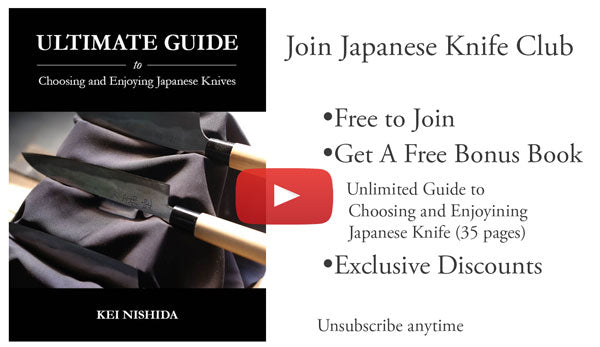
Sign up for free to the Japanese Knife Club to get advice and exclusive articles about how to choose Japanese Knives, and tips and tricks for using Japanese knives.
About the author
Kei Nishida
Author, CEO Dream of Japan
Certification: PMP, BS in Computer Science
Education: Western Washington University
Kei Nishida is a passionate advocate of Japanese craftsmanship, a writer, and the founder and CEO of Japanese Knife Co., Japanese Green Tea Co., and Japanese Coffee Co., all part of Dream of Japan.
His journey began with a mission to introduce the world to the exquisite flavors of Japanese green tea. Through Japanese Green Tea Co., he pioneered the import of premium tea grown in nutrient-rich sugarcane soil, earning multiple Global Tea Champion awards. He then expanded into the world of coffee, launching Japanese Coffee Co., the first company to bring Sumiyaki charcoal-roasted coffee to a global audience.
With a deep appreciation for Japanese artistry and tradition, Kei turned his attention to one of Japan’s most revered crafts: bladesmithing. Through Japanese Knife Co., he made handcrafted katana-style knives, created by a renowned katana maker, available outside Japan for the first time. These exceptional knives embody centuries of samurai sword-making expertise, blending tradition with modern functionality for chefs and collectors alike.
Kei’s journey continues as he uncovers and shares Japan’s hidden treasures—one sip, one blade, and one legacy at a time.


